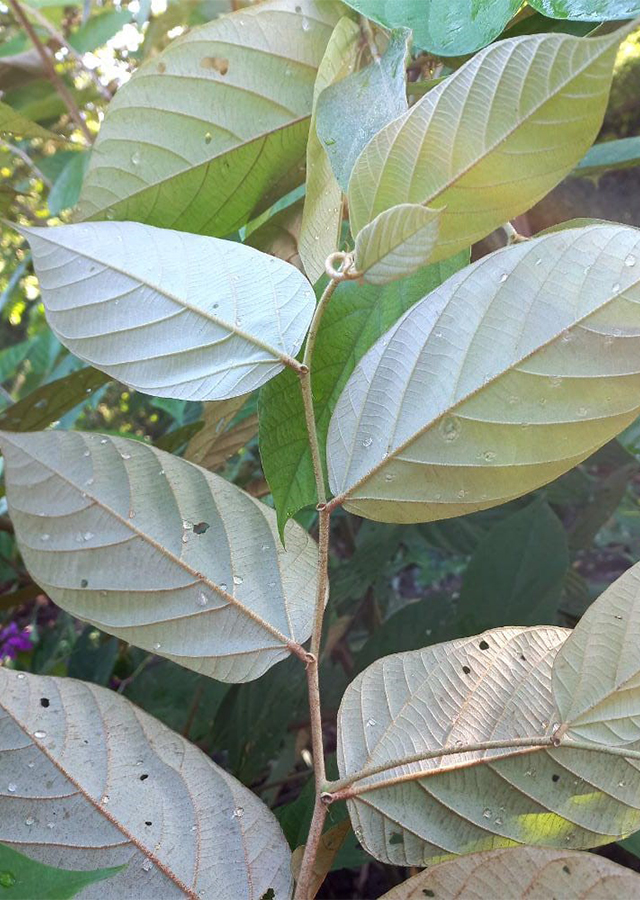Traditional Herbs from Pterospermum javanicum
toothache
- Prepare the roots and skin of the bayur, wash them until clean.
- Crush them until they become a paste.
- Place the paste on the cavities.
hemorrhoids
- Prepare the roots of the bayur then wash with running water.
- Boil with water until boiling.
- Strain the boiled roots.
- Drink.\u00a0
What is Pterospermum javanicum Looks like??



Parts of Pterospermum javanicum that could be used
- Bark
- Flower
- Root
- Stem
Pterospermum javanicum Distribution
Bayur is thought to have spread widely from India, Myanmar, Thailand, Malaysia, Indonesia (Sumatra, Java, Kalimantan), and Papua New Guinea. The tree is harvested from the wild for its wood, where the tree has high commercial prospects because it is classified as a wood-producing plant with resistance class IV. Bayur wood is generally used as a material for making plywood, furniture, shipping, bridges, pulp and paper. Apart from that, bayur also has several traditional functions in Indonesia and Malaysia. For example, in Lombok, especially in areas inhabited by the Sasak tribe, the roots and stems are used as traditional medicine and ingredients for traditional drinks (Tuak Bayur). The Sasak tribe believes that this traditional drink can be used to treat diabetes. Excessive exploitation of bayur plants due to illegal logging and other uses, causes bayur populations in natural habitats to decrease and become threatened. So its existence becomes increasingly difficult.Agroecology of Pterospermum javanicum
Bayur grows and spreads mainly in lowland forests. This plant is also spread in secondary forests at an altitude of 600-1,400 m above sea level. Usually bayur is found growing on ridges, riverbanks and also on limestone (limestone) soil. Likes open areas, where vegetables need light to grow, as well as moist soil conditions that are not waterlogged or dry conditions, with a wet to dry climate.
Morphology of Pterospermum javanicum
- Taproot.
- Stem woody, brown, surface of the bark rough.
- Single leaves, arranged alternately, simple, lower surface whitish brown, hairy, base of leaf asymmetrical, tip of leaf pointed.
- Flowers large (+/- 100 mm in diameter), short, yellowish flower stalks (pedicels) arranged in clusters with long and narrow petals. The inflorescence type is in the form of a mark (raceme).
- The fruit is shaped like a capsule, green-brown in color, with fine hairs which then disappear when the fruit ripens.
- The seeds are numerous and winged.
Cultivation of Pterospermum javanicum
- Generative (seed) and vegetative (shoot cuttings) propagation.
- Seed dispersal is aided by the wind.
Pterospermum javanicum, more details :
Chemical Content of Pterospermum javanicumLupeyl acetate, p-n-amylphenol, lauric acid, n-(methyl-d2)-aniline, pentanal, stigmast-4-en-3-one, γ-sitosterol, 4,22-cholestadien-3-one.
Benefits of Pterospermum javanicum
Treats dysentery, gingivitis, toothache, boils, sprains, stomach disorders, diabetes, hemorrhoids. Has antibacterial, antioxidant, anticancer, anti-inflammatory and analgesic activity.
Simplisia of Pterospermum javanicum
- Wash fresh flowers\u00a0under running water until clean then drain.
- Cut the flowers into small pieces to make the drying process easier and faster.
- Dry without direct sunlight for several days until the material is completely dry.
- Store flower simplicia in a closed and airtight container.
Another Facts for Pterospermum javanicum :
Synonym of Pterospermum javanicumPterospermum subinaequale Miq.
Habitus of Pterospermum javanicum
Tree. Annual tree, up to 59 m high
Habitat of Pterospermum javanicum
- Forest
- Land
No comments:
Post a Comment